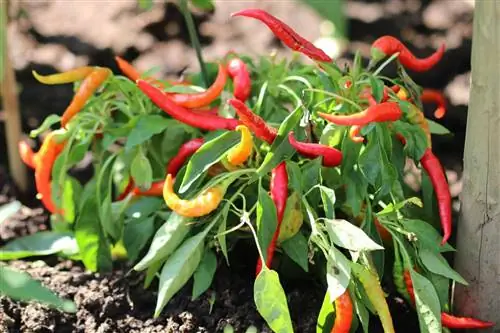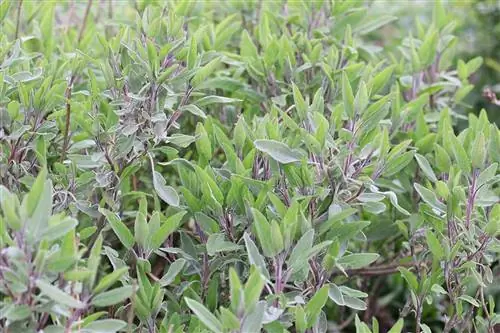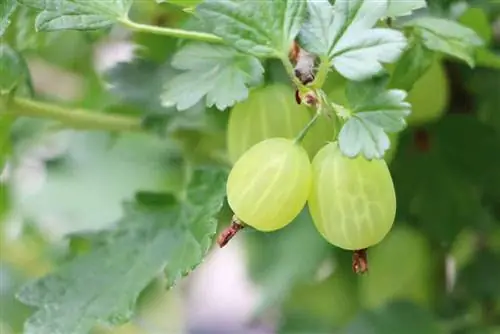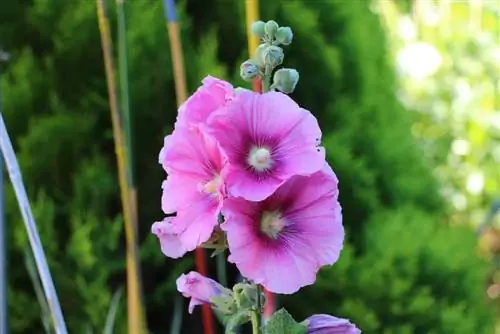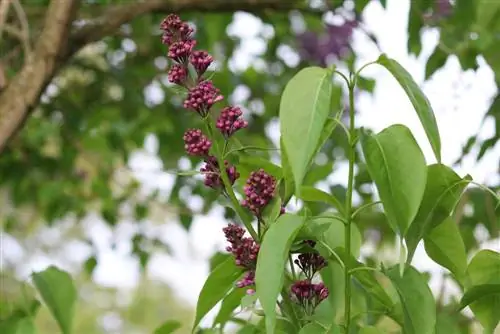- Author admin [email protected].
- Public 2023-12-17 03:39.
- Last modified 2025-01-24 12:45.
If chillies are overwintered appropriately and given the right care, they are perennial. Fresh or dried, they bring spiciness to spicy dishes and are easy to cultivate with the appropriate knowledge.
To hibernate or not?
In temperate climates, chillies - with the botanical name Capsicum - are often only cultivated as annuals, as the plants originally come from milder areas and are therefore not frost hardy. If they are not planted outdoors but grown in pots, the plants can be overwintered without any problems. This has several advantages. For one thing, you don't have to buy new chili plants or grow them from seeds every year. On the other hand, overwintered chilies sprout faster and produce higher yields.
Prepare for winter rest
Preparation for overwintering is easiest if the chili plants have been grown in a pot or bucket. If they are outdoors, they must be dug up carefully so as not to damage the roots.
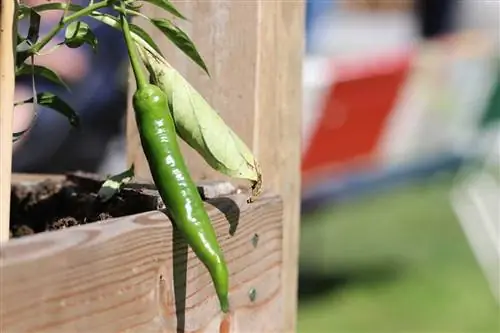
The plants should be brought indoors when temperatures drop to 12 to 13 °C at night. The following points should also be noted:
- Let the soil dry well before winter rest, stop watering in good time
- Harvest the chillies before putting them away
- Particularly hot varieties are more sensitive to cold and have to be brought into the house earlier
- Stop fertilization in August at the latest
- If there is a lack of space in the house for winter rest, select only the strongest chili plants
Cool overwintering
Ideally, the winter quarters are as bright as possible, but cool. The temperature should be between 10 and 15 °C. Ideal parking spaces are therefore:
- in the stairwell in front of the window
- an unheated winter garden
- a cool anteroom
- a well-insulated garage with windows
In addition to the temperature and light, attention must also be paid to the supply of water. The substrate should be at most slightly moist but never wet or completely dry. In addition, regular checks must be carried out. Because during the winter, the chillies are still susceptible to pests and diseases. Spider mites in particular can become a problem. Early detection and treatment can prevent the plant from suffering, weakening and being damaged. Should be checked:
- Top of leaf
- Underside of leaf
- Stem
- Earth
- Smell
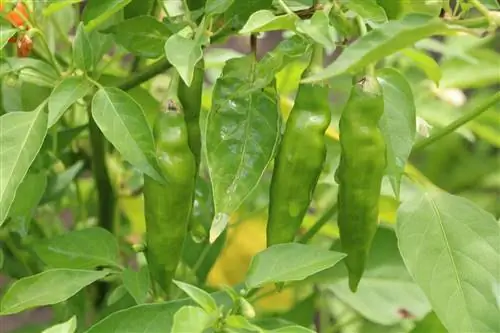
Parasites, discoloration, weaving or a musty smell from the earth are definitely warning signs that must be taken seriously. Otherwise, the problem may worsen and the plant may die. This is especially true during cold winter dormancy, as the plant's defenses are weakened during this time.
Winter warmly
In the countries of origin, the pepper family has no winter rest. It is comparatively warm and sunny all year round. Therefore, chillies can also be kept warm over the winter here. To avoid an abrupt change, the plants should be brought indoors when the thermometer reading drops to 15 °C during the night. The winter location should have a temperature of 15 to 20 °C and be as bright as possible. Even directly at the window on the south side, the lighting conditions here are usually not enough.
Because the warmer a plant is, the more light it needs. If this is not available naturally or is inadequate, a daylight lamp or plant lamp can be used. There should be at least four hours of UV light per day.
Care
If the plant is to overwinter warmly, attention must be paid not only to light and temperature but also to the supply of water and nutrients. Because the need for it remains almost the same as in summer, unlike during the cold winter. This means that the plant with the hot pods still needs to be watered regularly and lightly fertilized. Watering is done as needed and in such a way that the soil is always slightly moist but never wet. If the top layer of soil has dried out, a little watering is recommended.
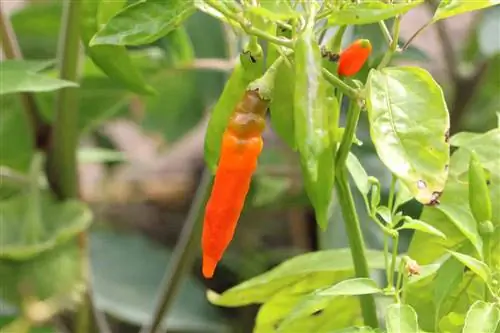
Fertilization can be diluted approximately every four weeks. However, both water and nutrients should be tailored to the temperature and lighting conditions. If the chilies are very warm and bright, for example in the living room, bathroom or kitchen, they need significantly more water and fertilizer. However, if it is only 15 °C and it is not too bright because an unheated corridor to the west was chosen as the location, watering every two to three weeks may be sufficient.
Preparation in spring
When the days become longer, warmer and brighter again, the overwintered Capsicum should be repotted. A good time for this is February. An exception is if the blending was only carried out at this time. Then cutting and repotting would cause too much stress for the plant. Due to the new substrate, additional fertilizer applications can be dispensed with in the first two months. If the chilies have been kept cold over the winter, they can slowly be made brighter and warmer after repotting. However, sudden major changes should be avoided. It should only increase by a few degrees at a time and gradually there should be more light.
Cut back
If representatives of the Capsicum family are overwintered, they can be cultivated for several years. Therefore, cutting back makes sense in some cases. Pruning ensures that the plant grows denser as it branches more. The measure can also save space while several plants are overwintering.
A radical cutting beyond the first branch is possible. However, gentler pruning can also be done. The only important thing is that the main trunk is not shortened. Cutting can be done both before and immediately after wintering.
Tip:
Some leaf mass should remain on the plant so that photosynthesis can take place, this promotes the formation of new shoots in spring.

